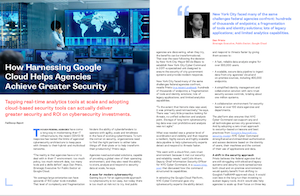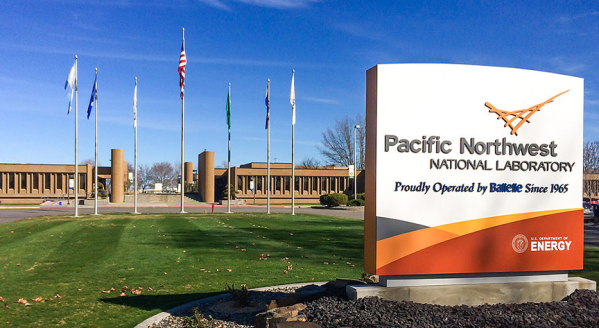- Sponsored
- Modernization
How cloud security tools provide greater return on agency resources

Security weaknesses exposed during the COVID-19 pandemic have prompted government agency IT leaders to look for better ways to address three key areas: vulnerabilities, threats and inefficiencies in measuring risk, according to a new report.
These vulnerabilities have also led to the realization that rather than piling on more tools, agencies are attaining more meaningful results by utilizing cloud services to increase visibility across their networks and analyze security data more rapidly.

Read the full report.
The report spotlights New York City Cyber Command as one of the many agencies that have seen significant operational improvements by taking a cloud-based, zero-trust approach that utilizes Google Cloud. The increased storage capacity, processing power and lower total costs gave NYC Cyber Command cybersecurity experts the ability to analyze data quickly and respond to security threats faster.
Using a cloud-based approach to security is a more cost- and resource-effective way to get the most from agency security tools, says the report, produced by FedScoop and StateScoop and underwritten by Google Cloud. With a single-pane-of-glass” view across the infrastructure — and a number of FedRAMP-approved cloud services — Google Cloud’s platform is designed to take on cybersecurity in a holistic manner.
The reality for many organizations is that their IT teams have a lot to manage already. In addition to ever-changing regulations and policy updates, there is an overwhelming amount of data and tools that agencies must manage, according to Dan Prieto, Google Cloud’s strategic executive for Public Sector.
“An average large enterprise can have upwards of 150 cyber tools installed. That level of complexity and fragmentation hinders the ability of cyberdefenders to operate with agility, scale and timeliness in the face of evolving cyberthreats,” he says.
To turn the corner on security, finding the right partners work with is an effective way to integrate the use of real-time analytics at scale. It can be a game-changer in terms of productivity.
The report touches on a number of tools that are available to consolidate and integrate cybersecurity telemetry and essential IT operations data from across all parts of the enterprise — legacy and cloud alike.
“When organizations move to a hybrid- or multicloud environment, a common misconception is that they can take their existing infrastructure and replicate it,” shares Chris Johnson, global compliance product lead at Google Cloud. The problem with that practice is that if you have inconsistent application of your security and compliance controls, you’re at risk.
That’s why the single-pane-of-glass view deployed across the hybrid-cloud infrastructure helps solve those visibility problems around policy and focuses security on outcomes.
Rather than piling on more tools, leaders are able to understand risk and able to make better informed decisions about resource trade-offs to make their existing resources go as far as possible.
Learn how Google Cloud helps government agencies improve citizen services, increase their operational effectiveness and deliver proven innovation or read more stories on preparing a Future-Ready Government.
This article was produced by FedScoop and StateScoop and sponsored by Google Cloud.






